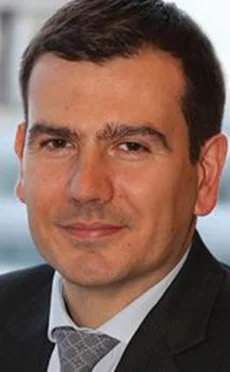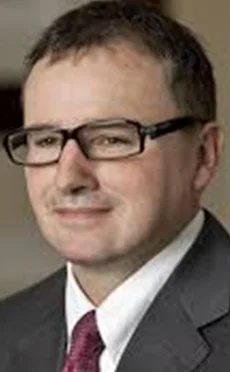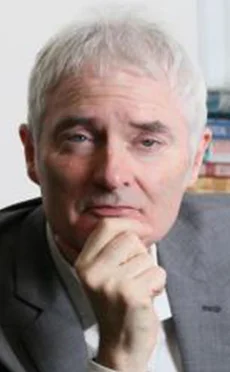
This article was paid for by a contributing third party.More Information.

Europe eyes the pitfalls of Japanification

Does the cultural and demographic experience of Japan apply to a heterogeneous grouping of nations that have no common monetary policy or a unified social outlook?

In the Bible, Egypt suffered seven lean years followed by seven fat years. Japan has not had such as good outcome, with far more than seven lean years. Does the same fate await Europe? And will its population show the same patience?
The Japanese experience has been profoundly influenced by the expectations and behaviour of individuals and companies in the country, according to Peter Tasker, a strategist and co-founder of Arcus Research. He joined the debate at the Societe Generale/Risk.net derivatives conference live from Asia as a hologram – a technique that turned the discussion into a riveting insight into the differences and similarities between Japan and Europe.
Tasker set the scene. While Europe’s slow-growth woes began with the financial crisis, Japan’s problems began further back and were a whole economy issue. They became a self-reinforcing phenomenon because of the way people and corporations reacted to the slump.
“The reduction in investment led to low growth and there was no longer the multiplier effect because there was no investment. This impeded growth,” said Tasker. People on the whole were not interested in the idea of a pension so people just kept working.
“People want to work. They have a job and they continue to carry on working well into what was previously retirement age. There is an unprecedentedly high employment ratio and yet no wage inflation,” he explained.

At the same time, the private life of people in Japan shows another behaviour characteristic uncommon in Europe: even if they have a job, people live at home rather than buying their own property. In Japan, these children staying at home are called “parasite singles”.
“This same behaviour is happening in the corporate sector big-time. No one feels the need to invest or move on,” said Tasker.
As the rest of the world reacted to the financial crisis by aggressive use of monetary policies, leading to low and even negative interest rates, nominal GDP growth and in some cases negative government bond yields, the reaction of Japanese politicians was less aggressive.
“There is clearly an intersection between politics and economic and monetary policy. We are seeing a polarisation in many countries in Europe and elsewhere in the world. This never happened in Japan, where there is a great deal of social capital and cohesion. Pain is shared through the whole community. There is no pressure on politicians in Japan to try something radially new,” said Tasker.

However, the internalised national stress has led to a rapid rise in the suicide rate, particularly among middle-aged males. Yet there are none of the street demonstrations or expressions of anger prevalent in some European countries. “The message to Japanese politicians was different, and so their response was different,” explained Tasker.
While the Japanese are willing to live with mild deflation, it is not the same in Europe. Tasker believes Europe would not survive 25 years of continued low or negative inflation, slow growth and ultra-low interest rates. “Systems will not survive. My view is that sooner or later we will have more explicit reflationary policies taking advantage of extraordinary issuing terms and attempting to appease the exposed elements of a very unhappy public.”
Peter Fitzgerald, chief investment officer multi-assets and macro at Aviva Investors, agreed with this assessment. “Economists tell you theoretically there is no limit to negative interest rates, but when people and institutions get into distressed territory there are limits.”
The idea that people and institutions will continue to hold instruments where the yield is negative is not sustainable. It is not a way to make money, said Fitzgerald.
While equities are more resilient, Europe’s equity market is coming from a very different place than the market in Japan. Price/earnings ratios on the Japanese market went to 75 times, Europe’s is closer to 12 times.

He also pointed out that the social structure of Japan is different to Europe, so retail investors behave differently.
“We are seeing more search for yield, and this is opening opportunities. Structurally, this makes implied value look good. Underperformance expectations driven by that search for yield is introducing opportunities,” noted Gwilym Satchell, multi-asset portfolio manager at Invesco.
He also believes the climate agenda may give politicians a way out of sluggish growth by giving them the incentive to inject stimulus into economies through environmentally related investments.
How best to allocate capital is constantly being debated in Europe. While the cost of monetary policy is one thing, how to get capital into profitable projects while rates remain low is proving more difficult, notes Aymeric Forest, global head of multi-asset investing at Aberdeen Standard Investments (ASI).
He points out that in the 1990s the Japanese government changed frequently. Policies were tried and failed. There was academic discussion about fiscal policy and budget equilibrium. “These are the same discussions you have having in Germany now. You are seeing the cost to government and political parties. [French president] Macron focused on an expansive policy, and we are seeing a move towards fiscal policy expansion.”

However, there are different fundamental drivers and demographics in Europe compared with Japan. “Europe is not an island like Japan,” he said.
Tasker said inflation is what will bring Europe out of its malaise. “Some inflation is required. I’m not sure which country will be the first out of the blocks. We’re getting to the situation where even the chief economist of the IMF is cheerleading for more expansionary fiscal policy.”
The dilemma for Europe is different from Japan. For example, politicians question whether they should keep interest rates way below equilibrium levels. “In Japan, if you reflate deliberately, the bondholders are Japanese and are both beneficiaries and victims,” Tasker noted. For Europe, and countries such as the UK, where the bonds are held largely by foreigners, it is a different story. “Would the Bank of England be tempted to reflate and see what happens? The politics of the eurozone are even more complex.”
Fitzgerald said politicians only tend to react to a crisis and even then the response can be sluggish, pointing to the eurozone crisis that needed the European Central Bank (ECB) to step in to make an impact. “Politicians need to respond and we need to get them to realise what is needed.”
Japanese GDP since the 1990s has been flat with outright deflation, but Europe still has inflation, albeit low. “There is still a possibility of a major fiscal response in Europe. But in Europe there is no overarching government unlike Japan, and some countries, like Germany, need significant structural and fiscal policy changes,” he said.

Forest agrees that a more granular and selective stimulus is needed. “We’ve had the value growth debate and we’ve seen how cheap value can become. If growth is scarce, investors pay a premium. Japanification is not new. In this environment, we need to focus on defensive growth, high-quality cashflow and more dividend growth with some consumer discretion,” he said.
Bank lending in Europe is increasing, said Alan Higgins, chief investment officer at Coutts. He predicted that if large national champion banks committed to a high level of dividends, there would be more equity growth within the banking sector. Looking at the banking market as a whole, he said it is a “leap of faith” for investors to believe that some banks will continue to pay dividends.
“There is no money to be had in equities,” declared Fitzgerald. “We have little exposure in Europe. We remain to be convinced that there is value. There are some attractive dividends in Europe, but the market is saying this is not sustainable. Our view on equities in general and particularly in Europe, remains cautious,” he said.
With low rates, the euro is behaving more like the yen, said Satchell. There are also worries about the European project. “That’s a real risk, a mild one, but still one. We see the euro as a defensive asset, but dollar and yen is where you go in a real crisis,” he said, adding that investors need to look in the right places for real value. For example, holding on to long volatility looked good for a long time but has not paid off.
Higgins thinks there is less yield hunting by investors in Europe, in part as they move to less liquid markets. For example, there is a move to diversify through real estate funds that are not mark‑to‑market.
If there is too much capital chasing of too few assets, will that lead to a destruction of wealth in the future? Tasker said the answer is that we will not know until after it happens. “Looking at the Asian equity markets, there are not particularly stretched valuation-wise. Equity earning yields in Japan are at their highest since 1970 and are finally paying out more,” he said. However, he touches on an area where there could be vast wealth destruction: fixed income. “We’ve never seen anything like this in human history with negative interest rates. This could get very bad at some point.”
In an environment where the Japanification of Europe is still a worry for investors, some are able to find values. Fitzgerald said his top trade idea is equities over a five-year time frame. “If you want to preserve capital, stick to the liquid side of the market and the ECB will buy from you.”
Satchell is trying to find idiosyncratic opportunities. “A lot of things are mispriced,” he said.
For Higgins, value is in bonds. “We are looking at the US curve and particularly the two and 10s and looking for hedges. If the macro environment goes wrong, interest rates go to zero and the curve steepens, you will make a return,” he said, adding that he sees this as a good hedge without taking duration risk.
Forest prefers going long the 30-year Japanese government bond with a cash hedge and shorting the 30-year Bund while potentially playing some of the fiscal trends.
Redefining derivative solutions for sedated markets
Read more
Sponsored content
Copyright Infopro Digital Limited. All rights reserved.
As outlined in our terms and conditions, https://www.infopro-digital.com/terms-and-conditions/subscriptions/ (point 2.4), printing is limited to a single copy.
If you would like to purchase additional rights please email info@risk.net
Copyright Infopro Digital Limited. All rights reserved.
You may share this content using our article tools. As outlined in our terms and conditions, https://www.infopro-digital.com/terms-and-conditions/subscriptions/ (clause 2.4), an Authorised User may only make one copy of the materials for their own personal use. You must also comply with the restrictions in clause 2.5.
If you would like to purchase additional rights please email info@risk.net